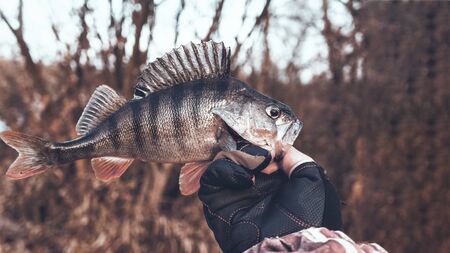Understanding Top Water Action
If you want to experience the heart-pounding thrill that gets every American bass angler hooked, it all starts with understanding top water action. There’s nothing quite like watching a largemouth bass explode on your lure right at the surface—a visual and visceral strike that sends adrenaline through your veins. But what is it about top water baits that drive bass into a feeding frenzy? The secret lies in the way these lures mimic wounded prey, skittering, popping, or walking across the water, sending out vibrations and splash that trigger the predator instincts of even the laziest bucketmouths.
When you throw a top water plug, frog, or popper, you’re playing into the bass’s natural tendency to ambush an easy meal. The commotion on the surface acts as a dinner bell, especially during low-light hours or when shad are schooling up shallow. American anglers live for these moments—the anticipation as your bait dances along, then BOOM! A blow-up erupts, sometimes so violent it’ll make you jump. This spectacle isn’t just entertaining; it’s also a critical window for reaction strikes. Largemouths don’t always hit because they’re hungry—they attack because that top water action triggers territorial aggression or opportunistic behavior.
For U.S. fishermen, this is more than just catching fish; it’s about connecting with nature in real time and witnessing the raw power of America’s favorite game fish. Knowing how and why top water baits work sets the stage for mastering baitcasting strategies that turn explosive strikes into brag-worthy catches.
2. Best Top Water Lures for Big Bass
When you’re gunning for trophy largemouth in classic American bass waters, your choice of top water bait can make or break the day. Let’s cut through the noise—here are the heavy hitters: poppers, frogs, and walking baits. Each lure has its own sweet spot when it comes to water type, cover, and bass attitude.
Poppers: The Go-To for Calm Mornings
Poppers are a staple for any serious bass angler. Their concave faces spit water and make that telltale “pop,” mimicking wounded baitfish on glassy surfaces. Early mornings on Southern lakes or Northern farm ponds? This is where poppers shine. Cast close to weed edges or around isolated cover, then work them slow with a pause—let those rings settle before your next twitch.
Frogs: Thick Cover Specialists
If you’re staring down a mat of lily pads or dense grass, tie on a hollow-body frog. These bad boys are weedless and built to hop right over slop where big bass lurk. Prime time is summer afternoons in places like Florida or Texas when fish bury themselves in thick mats. Walk that frog over the cover and be ready—the strike is pure adrenaline.
Walking Baits: Triggering Aggression Over Open Water
When the bite is tough and you need to pull fish up from deeper haunts, walking baits (like the classic Zara Spook) come into play. They zig-zag with a side-to-side “walk-the-dog” motion that triggers reaction strikes from aggressive bass. Work these lures along points, riprap banks, or over submerged timber—especially effective during post-spawn and early fall.
Top Water Lure Quick Reference Table
| Lure Type | Best For | Prime Conditions | Classic US Regions |
|---|---|---|---|
| Poppers | Open water near structure | Calm mornings, low light | Southeast lakes, Midwest ponds |
| Frogs | Heavy vegetation, mats | Summer midday, thick cover | Florida, Texas reservoirs |
| Walking Baits | Open water, scattered cover | Breezy days, post-spawn/fall | Great Lakes, Ozarks rivers |
No One-Size-Fits-All Lure—Adapt to Conditions
The takeaway? Don’t get locked into just one style. Poppers excel in calm conditions; frogs rule the jungle of pads; walking baits draw out suspended giants. Rotate your arsenal based on the season and water type—that’s how real U.S. bass hunters stack limits and land monsters.

3. Gear Up: Rods, Reels, and Line Considerations
If you want to crush it with topwater bass on baitcasting gear, your setup is everything. You need a rod, reel, and line that work together for pinpoint casts, crisp twitches, and rock-solid hooksets. Let’s break down the specs like a true American bass angler—no nonsense.
Rod Power & Action: Backbone Meets Finesse
Forget noodle rods. For topwater baits—whether you’re chugging a popper or walking a Zara Spook—you want a medium-heavy power rod with fast action. That means enough backbone to drive hooks home but with just enough tip flex to walk the dog or pop a lure right. Go for 6’6” to 7’ in length; it’s the sweet spot for accurate casts under docks or alongside weed lines.
Baitcasting Reel: Speed Matters
Your reel needs to keep up with fast-moving topwater action. Look for a baitcaster with at least a 7:1 gear ratio (many pros run 8:1 or even faster). High-speed reels help you burn slack quick after twitches and pick up line when that lunker explodes out of nowhere. Don’t sleep on smooth drag systems either—big largemouths will test your hardware hard.
Line Choices: Stealth and Strength
Braided line rules the topwater game thanks to zero stretch for instant hooksets and brute strength when hauling fish through slop. Go 30-50 lb braid for most scenarios, but if water clarity is an issue, tie on a short mono leader (12-20 lb test). Mono floats and has just enough give for treble-hooked lures, making it clutch around heavy cover.
Pro Tip: Dial In Your Setup
Before sunrise, check your knots, drag tension, and spool tension. A dialed-in combo means fewer backlashes and more time working your bait in the strike zone. The right gear doesn’t just make you look legit—it gets you hooked up when it counts.
4. Timing and Hot Spots
If you want to crush it with top water baits for largemouth bass, timing is everything—no joke. Those epic blowups happen when you hit the right window, and knowing where to cast is just as important. Here’s how to lock in on both.
Best Times for Top Water Action
Bass aren’t feeding on top 24/7, so you’ve gotta be strategic about when you throw that popper or frog. Check out the prime times in the U.S.:
| Time of Day | Why It Works |
|---|---|
| Early Morning (Dawn) | Bass are shallow, hunting baitfish on calm water before the sun heats things up. |
| Late Evening (Dusk) | Low light triggers aggressive surface strikes as bass ambush prey moving into shallows. |
| Overcast Days | Cloud cover keeps fish active on top longer, making midday action possible. |
Seasonal Sweet Spots
In most states, spring and fall are your best bets—water temps between 60–75°F get those bucketmouths fired up. Summer can be good too, but focus on low-light periods or shady cover when the sun’s blazing.
Locating Largemouth Ambush Zones
Largemouth bass are ambush predators—they’re not gonna chase your bait all over the lake. Target these classic hot spots on your local waters:
- Lily Pads & Grass Mats: Frogs and buzzbaits shine here; bass tuck under for shade and strike anything that disturbs the surface.
- Docks & Overhangs: Skip a walking bait under docks or trees; big fish hide out of sight, ready to pounce.
- Points & Creek Mouths: Moving water funnels baitfish—work your topwater along the edge for reaction bites.
Pro Tip: Don’t Ignore Riprap and Shallow Flats
Bass love cruising rocky banks and flats at sunrise and sunset. Fan-cast these areas with a popper or walking bait—you’ll often catch aggressive feeders patrolling for an easy meal.
5. Techniques That Get Results
Hands-On Retrieves for Heart-Stopping Strikes
If you want to light up the surface with explosive bass strikes, your retrieve style is everything. The classic “walk-the-dog” technique with a topwater bait like a Zara Spook is a proven killer—just keep your rod tip low and twitch it in rhythm, letting the lure zigzag like a wounded baitfish. For buzzbaits or prop baits, burn them fast enough to churn water but slow enough to keep them on the surface; this triggers reaction bites from aggressive largemouths patrolling open flats at dawn and dusk.
Pauses: The Secret Sauce
Don’t just reel steady—pause your lure near likely ambush points like laydowns or dock pilings. Bass lurking in cover often crush a motionless bait after it sits for a second or two. Try a popper: cast tight to structure, let the rings fade, then give it a sharp pop followed by a long pause. This mimics injured prey and tempts even stubborn lunkers out of heavy cover.
Bumping Cover Without Hanging Up
When you’re targeting thick grass mats or submerged timber, try “frogging.” Use a weedless hollow-body frog and skip it over pads or matted grass. Twitch it erratically, pausing in pockets or holes where big bass might be waiting. If you feel resistance but no strike, don’t set the hook right away—wait for weight, then swing hard.
Tricks for Pressured Waters
On lakes where bass have seen every trick in the book, downsize your topwater presentation. Go with finesse poppers or smaller walking baits and switch up your cadence—sometimes that subtle change is all it takes. And don’t overlook early morning or twilight hours when boat traffic is minimal and bass are most active on top.
Pro Tip: Change Angles Often
Work an area from multiple angles before moving on; sometimes a different approach line triggers fish that ignored your first pass. Remember, largemouth bass aren’t always predictable—keep experimenting until you dial in what’s working on that particular day.
6. Common Mistakes and Fixes
When it comes to top water baitcasting for largemouth bass, even experienced anglers slip up on some classic mistakes. Here’s the lowdown on what most folks get wrong and how you can tighten up your game to land more fish.
Blowing the Hookset
This is hands-down the number one error. You see that explosion on the surface and your instincts tell you to rip back on the rod—fast. But here’s the deal: setting the hook too soon just yanks the lure away from a bass before it’s got a solid hold. Instead, watch your line. Once you feel weight or see the line move sideways, then drive that hook home with authority. Patience pays off big time here.
Poor Casting Accuracy
If you’re not putting your lure tight to cover or right next to ambush points like stumps, docks, or weed edges, you’re leaving fish on the table. Largemouths strike when they feel safe, so dial in your thumb control and practice precision casts. Pitching and skipping baits under overhangs isn’t just a flashy move—it’s a must if you want big bites.
Fishing Too Fast or Too Slow
Sometimes anglers burn their lures across the surface like they’re late for supper—or they drag them so slow it’s like watching paint dry. Read the mood of the fish: on hot days, speed things up; in cooler temps or after a cold front, slow your presentation down with subtle pauses and twitches. Let the bass tell you what they want.
Ignoring Line Management
Too much slack and you’ll miss subtle takes; too tight and you’ll spook wary bass. Keep just enough tension to control your lure but still allow for natural movement—and always be ready to react at a moment’s notice.
Not Adjusting Gear Settings
Set your drag too loose, and you’ll lose big ones in cover; too tight and you risk snapping off when they surge. Find that sweet spot where you can muscle a fish out without breaking off. Regularly check your knots and retie as needed—top water blow-ups put stress on every weak link in your setup.
Tune out these common mistakes, and your hook-up ratio will go through the roof. Top water baitcasting for largemouth bass is all about patience, precision, and reading each situation as it unfolds—master these fundamentals and watch your catch numbers soar.
7. Top Water Bass Fishing: Real-Life Stories & Tips
If you want to get gritty and real about top water baitcasting for largemouth bass, there’s no substitute for lessons learned on the water. Here are a few American-style anecdotes and hard-earned tips that separate weekend warriors from seasoned stick slingers.
Busting the Dawn Bite: The Early Bird Gets the Blow-Up
Last summer, I hit my local Texas reservoir before sun-up with nothing but a walking frog tied on 30-lb braid. First cast near a submerged log, I barely twitched it when a fat 5-pounder exploded from underneath. Lesson? If you’re not fishing top water at first light, you’re missing some of the wildest strikes of your life. Bass are most aggressive in low light—set that alarm clock early and get after it.
Tip: Don’t Rush Your Retrieve
Too many anglers burn their poppers or frogs across the surface. Take it from me—the slower, the better. Let your bait sit after each twitch. Sometimes, that dead pause drives bass nuts, especially if you’re targeting pressured fish. Patience isn’t just a virtue; it’s a strike trigger.
Tough Cover Calls for Tough Gear
Out in Florida’s thick hydrilla mats, finesse won’t cut it. I watched a buddy lose his PB because he brought a medium-action rod to a jungle fight. Heavy rods and strong braid (at least 50-lb) let you rip those lunkers out of cover before they bury themselves deep. Don’t show up undergunned—bass in heavy cover play rough.
Tip: Upgrade Your Hooks
Standard hooks can bend out on big fish or get fouled by weeds. Swap them for heavy-duty trebles or double up on split rings if you’re throwing top water plugs. Sharpen them regularly—dull hooks lose trophies.
Reading the Water: Where Strikes Happen
I’ve found more success targeting isolated targets like stumps, docks, or lone lily pads than casting blindly into open water. Bass are ambush predators—put your bait where they’re hiding and watch magic happen.
Streetwise Secret:
If you see nervous baitfish flickering or hear bluegill popping bugs on top, throw your lure right in the chaos—that’s dinner time for big bass.
The Bottom Line
Bass fishing with top water baits isn’t just technique—it’s attitude and grit. Every missed blowup is a lesson; every fish landed is proof you’re doing something right. Trust your instincts, pay attention to what works, and don’t be afraid to experiment until you dial in the bite. Out here, experience is the best teacher—and every day on the water adds another chapter to your story.


